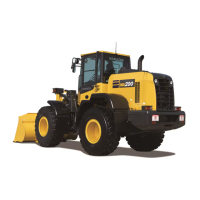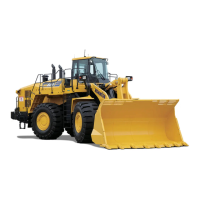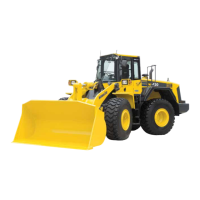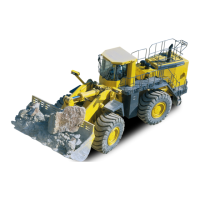.
SAFETY
PRECAUTIONS FOR OPERATION
TRAVELING ON SLOPES
To prevent the machine from tipping over or slipping to the side, always do as follows.
Keep the work equipment at height (A) 20 - 30 cm (8 - 12 in)
above the ground) so that it can be lowered immediately to the
ground to stop the machine in case of emergency.
Always travel straight up or down a slope. Traveling at an angle
or across the slope is extremely dangerous.
Do not turn on slopes or travel across slopes. Always go down
to a flat place to change the position of the machine, then travel
on to the slope again.
Travel on grass, fallen leaves, or wet steel plates with low speed. Even with slight slopes there is a hazard that
the machine may slip.
If the engine stops, depress the brake pedal immediately, lower the bucket to the ground, and apply the parking
brake to stop the machine.
When traveling downhill, never shift gear or place the transmission at neutral. It is dangerous not to use the
braking force of the engine. Always place the transmission in a low gear before starting to travel downhill.
When traveling downhill, travel slowly. If necessary, use the braking force of the engine together with the brake
pedal to control the travel speed.
When traveling up or down hills with a loaded bucket, always travel with the bucket facing uphill. If the machine
travels with the bucket facing downhill, there is danger that the machine may tip over.
METHOD OF USING BRAKES
When the machine is traveling, do not rest your foot on the brake pedal. If you travel with your foot resting on the
pedal, the brake will always be applied, and this will cause the brakes to overheat and fail.
Do not depress the brake pedal repeatedly if not necessary.
When traveling downhill, use the braking force of the engine, and always use the right brake pedal at the same
time.
Set to the lock-up and use the braking force of the engine.
2 - 28
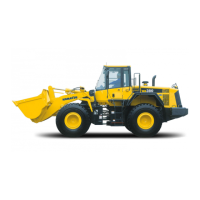
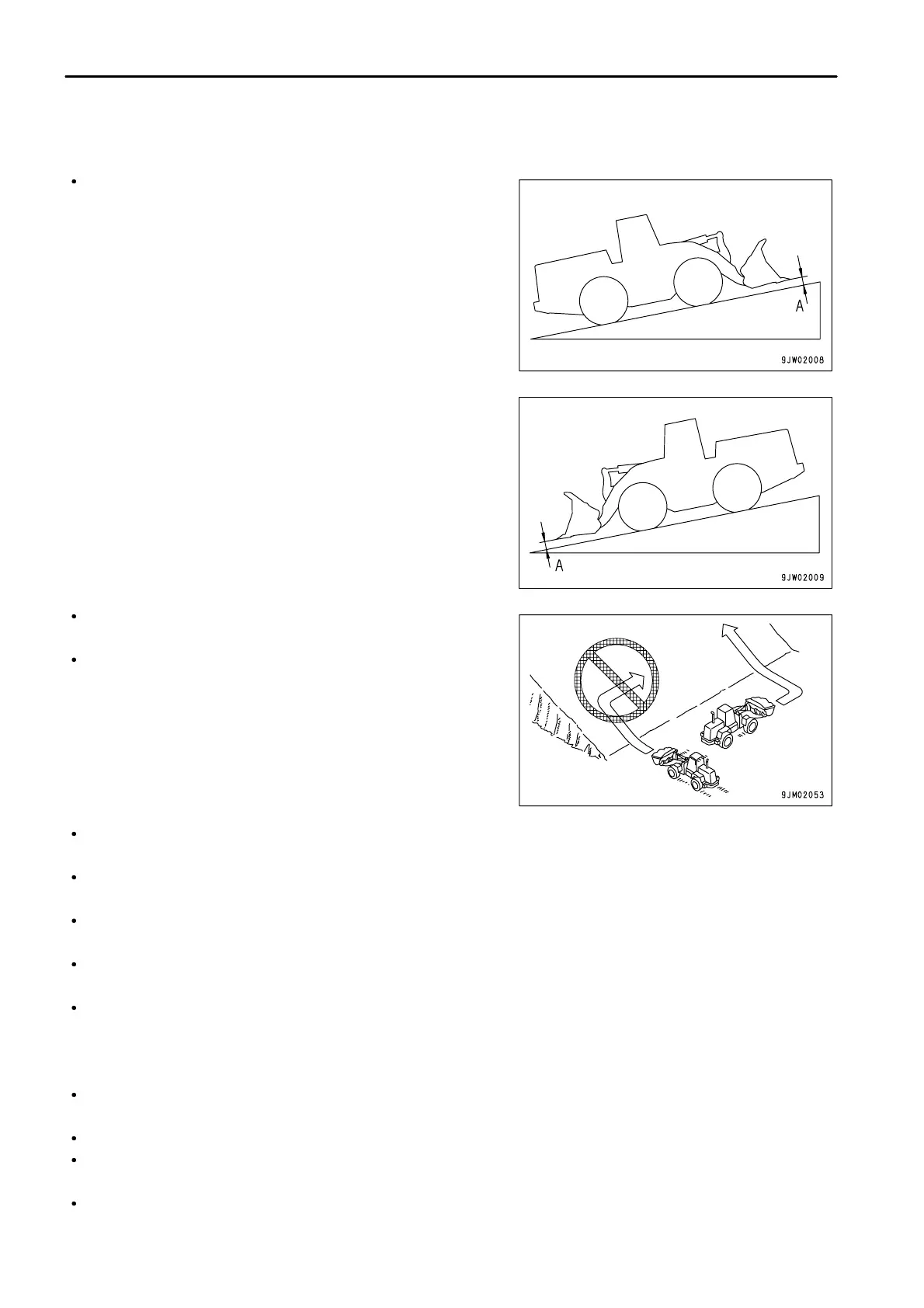